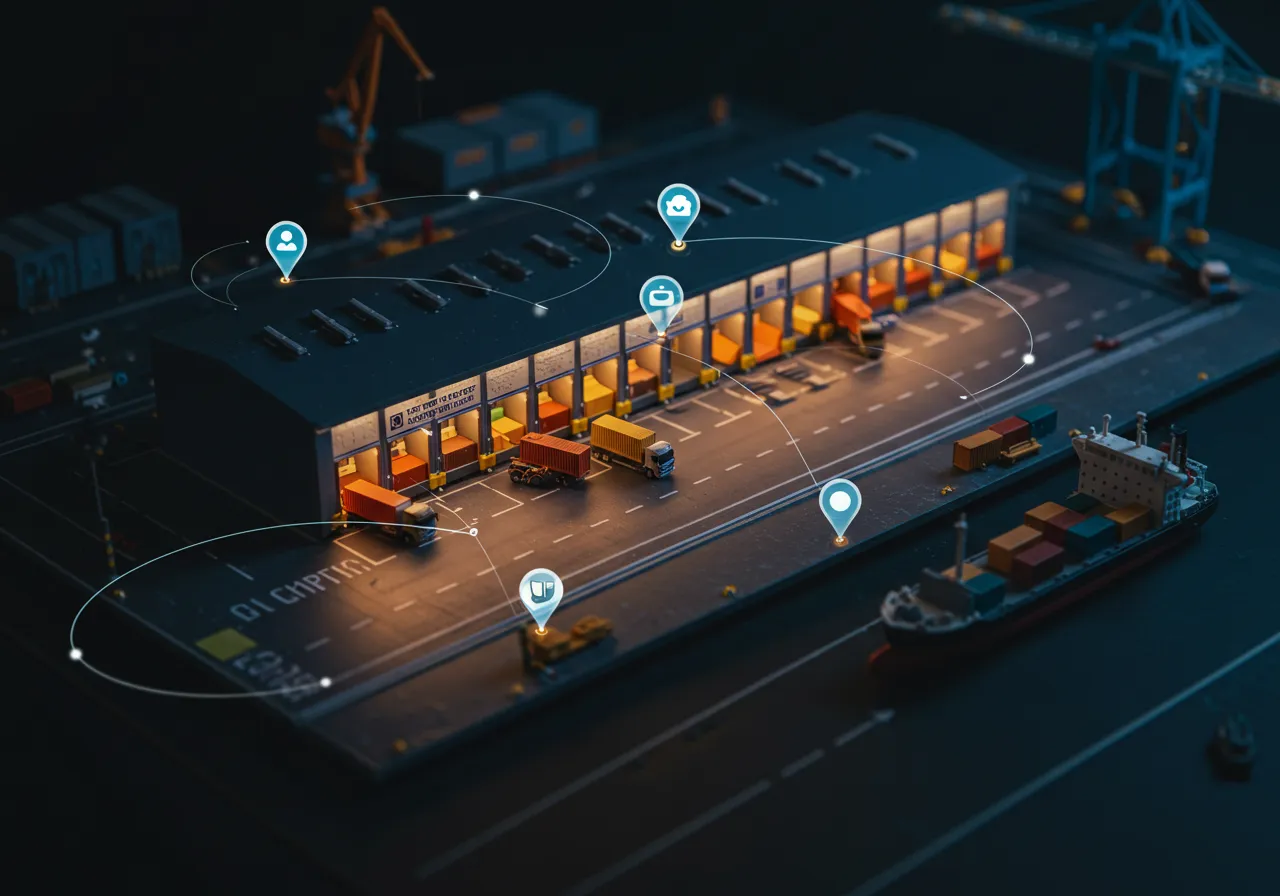
Optimize Your Supply Chain Network
Harness advanced analytics and predictive modeling to enhance real-time decision-making, cut operational costs by up to 15%, and streamline your logistics operations for seamless global distribution.
Strategic Network Planning with AI Insights


Optimized Resource Allocation Strategies
Industries We Serve
- Retail: Tailor logistics solutions to enhance the efficiency of supply chain operations, reducing delivery times by up to 30% and improving inventory turnover with automated demand forecasting. Implement omnichannel strategies to ensure seamless integration between e-commerce and brick-and-mortar stores.
- Manufacturing: Optimize production scheduling and supplier management to decrease lead times by 15%. Deploy Just-in-Time (JIT) delivery models to minimize stockouts and reduce warehousing costs, thereby increasing production line efficiency and meeting customer demand promptly.
- Logistics: Streamline freight operations and route planning using real-time tracking systems to cut down fuel consumption by 12%. Enhance fleet management with telematics, improving vehicle utilization rates and reducing carbon emissions to meet sustainability targets.
- Healthcare: Ensure the safe and timely delivery of medical supplies and pharmaceuticals with temperature-controlled logistics solutions. Improve patient care by reducing supply chain disruptions and maintaining a 99% product availability rate, crucial for critical care resources.
- Technology: Facilitate rapid deployment of components and finished products with agile supply chain strategies, reducing time-to-market by 20%. Utilize blockchain for secure, transparent transactions, enhancing traceability and reducing counterfeit risks in electronic components.
Core Optimization Techniques in Supply Chain
- Demand Forecasting: Implement advanced machine learning algorithms to achieve over 90% accuracy in predicting consumer demand. This minimizes stockouts and reduces excess inventory by 20%, crucial for industries such as electronics and fast-moving consumer goods.
- Inventory Optimization: Utilize real-time data analytics to adjust inventory levels dynamically, reducing holding costs by up to 30%. This approach is vital for perishable goods sectors like food and beverage, where freshness is key to profitability.
- Facility Location Optimization: Apply geospatial analysis to identify optimal warehouse locations, cutting transportation costs by 15–25%. This is especially beneficial for e-commerce and retail sectors, where proximity to urban centers ensures faster delivery.
- Transportation Routing: Leverage route optimization software to decrease fuel consumption by 10% and improve delivery speed by 20%. This technique is particularly impactful in industries with large fleets, such as logistics and distribution companies.
- Scenario Planning: Develop contingency plans using simulation models to mitigate risks associated with supply chain disruptions. By anticipating potential issues, such as natural disasters or sudden demand spikes, companies in the automotive and aerospace industries can maintain operational continuity.
Optimization Features
Cost Reduction
Achieve up to 15% cost savings by employing lean logistics methodologies that eliminate waste and streamline operations. Utilize process optimization to reduce fuel consumption and cutting-edge inventory management techniques to lower storage costs.
Real-Time Monitoring
Enhance supply chain visibility with our live dashboard analytics that track shipment status, predict delays, and provide actionable insights. Achieve a 30% improvement in supply chain responsiveness by identifying bottlenecks as they happen.
Time Efficiency
Reduce delivery times by up to 20% through automated scheduling and dynamic routing algorithms. Our system minimizes idle time and ensures timely delivery, enhancing customer satisfaction and operational efficiency.
Operational Flexibility
Adapt quickly to market changes with modular supply chain solutions allowing for rapid adjustments in fleet deployment and resource allocation. Achieve a 25% increase in operational flexibility, ensuring continuity even in fluctuating demand scenarios.
Dynamic Modeling for Adaptive Logistics

Benefits of Network Optimization
- Operational Efficiency: Streamline processes and reduce transit times by 20% using automated route planning systems that optimize driver schedules and vehicle loads.
- Strategic Flexibility: Enable agile decision-making by integrating scenario-based planning tools, allowing businesses to adjust strategies rapidly in response to supply chain disruptions.
- Enhanced Visibility: Utilize telematics and IoT technologies to gain real-time insights into shipment locations and conditions, cutting down lead times by 15% and improving customer satisfaction.
- Risk Mitigation: Anticipate and mitigate risks through predictive analytics that assess potential supply chain vulnerabilities, reducing downtime by preparing alternative logistics pathways.
- Cost Management: Optimize logistics costs by employing data analytics to identify and eliminate inefficiencies, achieving an average cost reduction of 12% on transportation expenses.
Our Optimization Process
Revolutionize Your Supply Chain
You may also be interested in
Maximize your potential with our seamless, end-to-end supply chain solutions.

Global Transportation & Distribution Optimization
Enhance your logistics operations with precision-engineered transport solutions. Benefit from a 20% reduction in transit time and achieve seamless distribution across 120 countries, ensuring your supply chain remains resilient and agile.

Data Analytics & Reporting
Harness predictive analytics to streamline logistics, reduce lead times by up to 30%, and optimize inventory levels, driving smarter supply chain decisions.

Inventory Buffer Strategies
Harness strategic inventory buffers to mitigate supply chain disruptions, reduce lead times, and improve service levels. Elevate your operation's adaptability and meet fluctuating demands seamlessly with precision stock management.